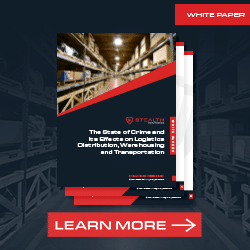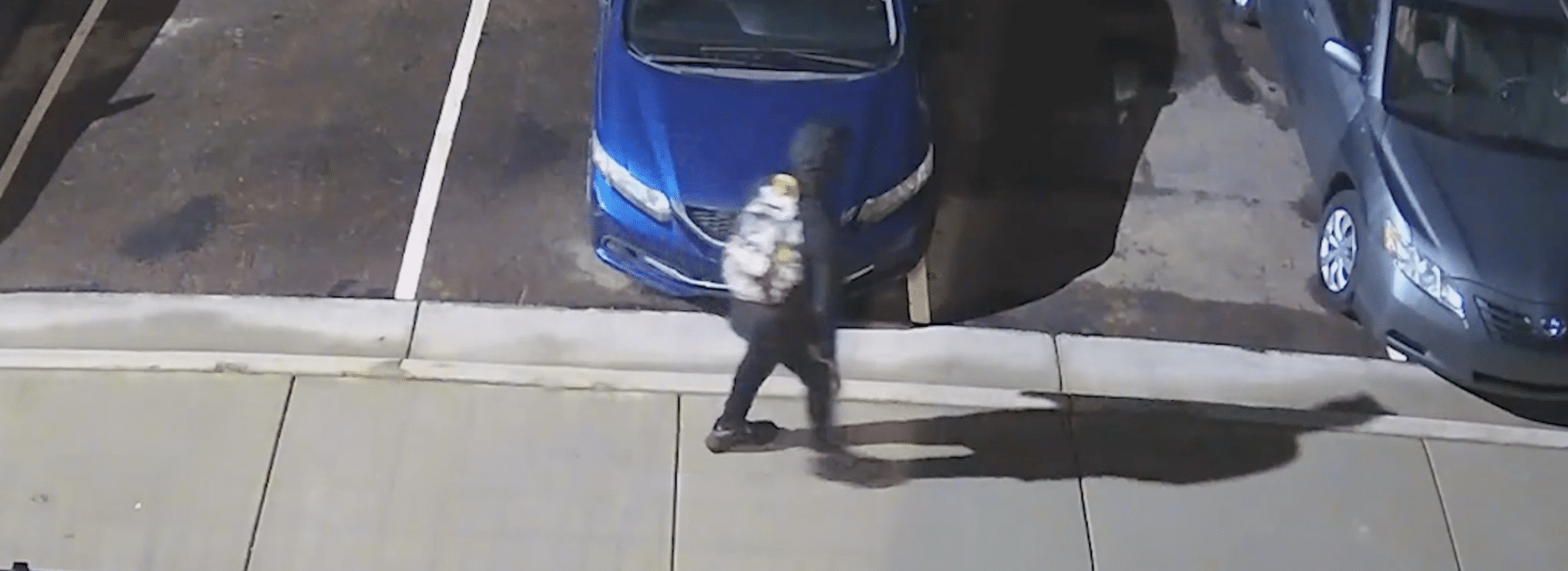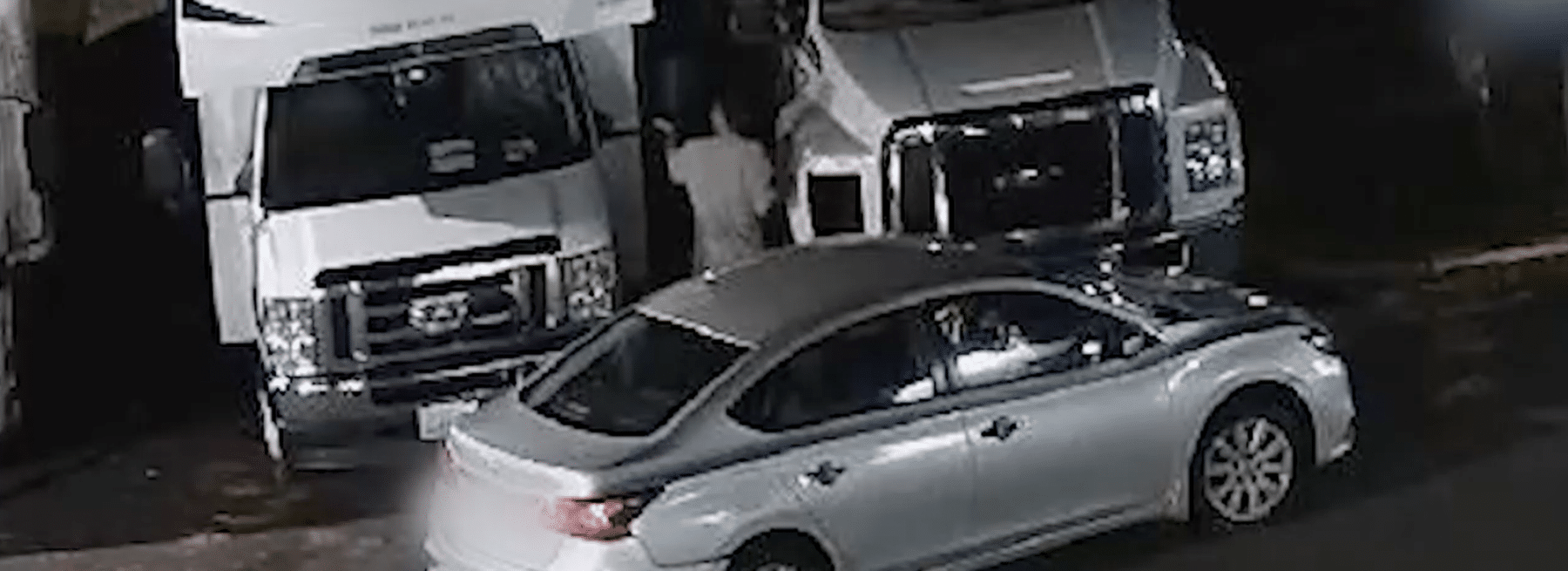This is not the time to rest on your laurels when it comes to protecting assets, people, and cargo. Cargo theft continues to plague factories, transportation, shippers, warehouses, facilities, and other businesses across the U.S. and Canada.
The Latest Cargo Theft Data
According to the Overhaul Risk Advisory Services LLC report, there were 1,183 reports of cargo theft in 2023. Each of the thefts had an average of $546,045 in losses!
California and Texas make up 63% of the thefts. At 75%, the bulk of the thefts in Canada occurred in Ontario. The company compiling the report expects cargo theft to continue surging, potentially by 35% in 2024.
With the pandemic behind us, what could be causing the increase? One reason is due to the shortage of supplies. Businesses will pay a lot of money for high-demand products. They even buy them from anonymous websites. Though cargo theft of electronics is the highest at 22%, no product type is safe. Food and drinks are right behind at 15%. After that are home and garden supplies, auto and parts, and clothing and shoes.
According to CargoNet, a Verisk company, almost one-third of all cargo thefts occurred at warehouses, Forbes reports. That’s followed by 255 thefts in locations identified as the “other” category. CargoNet states the average losses increased by 67% over the previous year. They believe it will climb another 35% in 2024.
This number only covers reported cargo theft. Unreported thefts make the actual number higher. The CNBC story quoted Scott Cornell of Travelers who believes cargo theft is at an all-time high. The vice president of operations at CargoNet reveals to CNBC that there are more than 220 cargo theft incidents each month. Back in 2014, it was only 100.
Why Does Cargo Theft Continue to Be a Problem Post-Crisis?
Why is cargo theft surging? In the CNBC story, the CEO of Overhaul explains that cargo theft is very low risk and very high reward. Thieves can easily hijack a truck in transit. Furthermore, swiped products are easy to resell.
Danny Ramon, Overhaul Intelligence and Response Manager, tells FleetOwner that the upswing is in pilferages. An example of pilferage is when items are stolen from a cargo trailer without taking the entire trailer.
However, most cargo thefts occur at warehouses. Organized crime rings have the resources to pull off sophisticated crimes through fictitious pickup. Ramon confirms a growing number of thefts involving fraudulent or stolen carrier or driving identities. In fact, a CargoNet story shows a 600% increase year-over-year in fictitious pickups.
Here’s the way the stolen carrier identities and fictitious pickup process work. A criminal pretends to be a representative of a well-known freight company. The criminal negotiates with brokers for the price of the load, picks it up, and then disappears, leaving the company with no further communication.
At some point, the broker will realize that the goods did not reach their intended destination. They will then contact the trucking company to confirm that they did not pick up the shipment. This issue is widespread, and according to a FreightWaves story, organized crime groups have been responsible for nine out of ten theft incidents.
These rings will watch over warehouses and distribution centers. They’re patient because they know it’s a high-reward crime. Organized crime rings stay on top of current market demands and adjust quickly. If the current market demand is for electronics, then they will switch their tactics to find cargo carrying electronics. If market demand switches to food and drink, they pivot quickly.
Food and drink are one of the easiest items to steal. It’s harder to find evidence of perishable items because they can be consumed quickly.
The rise in cargo theft requires warehouses, facilities, factories, transportation, shippers, and other businesses to invest in proactive security measures and risk management strategies.
How to Deter Cargo Theft
Considering the flood of cargo theft incidents, businesses must bolster their security measures and look for proactive solutions. Therefore, there is a notable increase in investments directed towards preventive strategies and emerging technologies. Digital locking systems and real-time tracking are now emerging as the prevailing norms in safeguarding cargo.
These advancements serve as deterrents to theft and contribute to the potential recovery of stolen items. These offer a ray of hope in an ongoing struggle against criminal activities. The collaborative endeavors of companies, law enforcement, and security professionals underscore the remarkable resilience and adaptability of the supply chain amidst challenges. Here are the top ways to help deter cargo theft.
Create and follow processes and procedures
To deter fraudulent pickups, a company needs strong and effective processes and procedures. This involves verifying bids with the motor carrier, using contact info from the Federal Motor Carrier Safety Administration (FMCSA), and confirming details like the carrier and driver matching the shipment information.
It’s also wise to contact customers to confirm the delivery. New motor carriers should be cautious of customers using peer-to-peer money transfer apps, and any deviation from the bill of lading address is a red flag.
It’s invaluable to require motor carriers to share information 24 hours before pickup, including driver and carrier details, truck number, and insurance information. Investing in a shipment tracking system that lists approved truck drivers can also enhance security.
Include the employees
Before hiring new employees, run background checks. This is standard operating procedure for many companies. Processes are only as good as the employees who follow them. It’s crucial to conduct regular training on security processes. To validate whether employees are following the cargo management process, conduct random spot checks and self-audits.
Use locks, sensors, and trackers
Smart locks, sensors, GPS trackers, and seals provide an additional layer of security. Air cuff locks and high-security rear door locks help prevent unauthorized truck and trailer movement. Light and temperature sensors can detect changes, alerting dispatchers of potential issues and to investigate.
Randomize seals
Organized crime rings have the resources to create copies of seals. To minimize the risk of replicas, randomize seal colors. Since not everyone can recognize colors, it’s smart to include symbols or letters to indicate the seal color. For example, a red seal could have “red” on the seal.
Access control system
An access control system can automate truck driver check-in and verification procedures. An access control system adds layers to security. The company can monitor the movement of all trucks from entry to exit. The system can manage building access for everyone and control who has access to limited-access rooms.
Better yet, integrate an access control system with video surveillance and remote monitoring. It levels up access control.
Video surveillance with remote monitoring
An integrated security system that incorporates access control and remote video surveillance delivers a comprehensive security solution with multiple layers. Remote video surveillance takes a proactive approach to security. It has the power to identify security gaps and lapses. As soon as these gaps pop up, the security team can contact the business to remediate the risk.
While you may have a strong security training program, humans will make mistakes. Video surveillance is like an outside employee who has people’s backs. It’s a proactive security solution that can catch security and safety mistakes. It also has the ability to catch a crime that’s about to happen. That’s because it can recognize someone approaching the business when there should be no one on site.
The reason this is possible is that a video surveillance system combining video analytics and human intelligence can monitor unusual scenarios and alert the human monitoring operator. The security personnel can review the situation to figure out what’s happening. They won’t call the police until they confirm there’s an emergency.
If there’s a possible crime about to happen, the monitoring operator can issue a warning over an onsite speaker. The operator is located away from the site. This takes away the fight or flight response that can happen when people are in an unsafe situation. The monitoring operator calmly follows processes in addressing problems.
Artificial intelligence, such as video analytics, offers several benefits in video surveillance. It can monitor numerous cameras and thousands of scenarios to identify matches accurately, which eliminates tedious monitoring work for humans. However, the best results in video surveillance can be achieved by combining artificial and human intelligence.
In case the crooks get away with the crime before the police arrive, the video cameras can store all footage for easy retrieval by video analysts. The security cameras are powerful enough to be able to capture identifying information. They can record and retain all video footage. Police, insurance, and the company may have the proof needed to solve a crime and liability claims.
Remote video surveillance can do more than deter cargo theft. There can be innocent-looking scenarios that don’t look like problems until someone makes a claim. For example, someone falls. People trip and fall. There is nothing suspicious about that.
However, the person who fell may try to make a liability claim saying the company was liable for their injury. The stored video recordings will tell the story. Video analysts can find the incident and send the footage to the stakeholders. It’s difficult to win liability claims without proof.
The advantage of security cameras with remote monitoring is that the solution can yield a return on investment within months. It can help reduce the risk of cargo theft.
To learn more about deterring cargo theft with remote video surveillance, check out The Effects of Crime on the Transportation Industry. This guide discusses cargo thefts plaguing warehouses, distribution centers, and logistics facilities. For a customized security plan that maximizes your ROI, contact us.
Texas Private Security License Number: B14187
California Alarm Operator License Number: ACO7876
Florida Alarm System Contractor I License Number: EF20001598
Tennessee Alarm Contracting Company License Number: 2294
Virginia Private Security Services Business License Number: 11-19499
Alabama Electronic Security License # 002116
Canada TSBC License: LEL0200704





